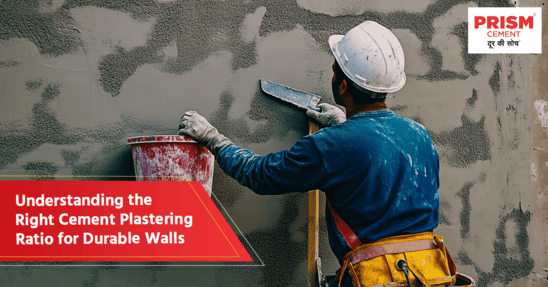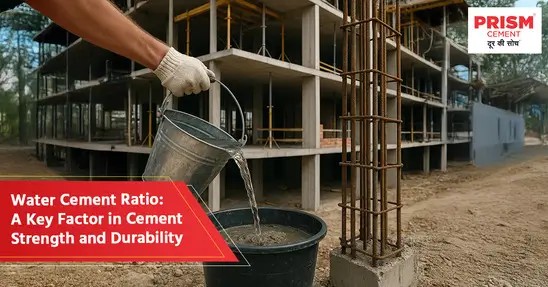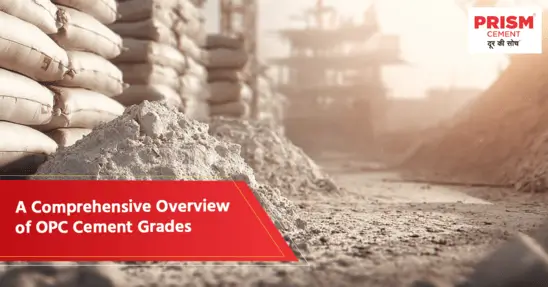Plastering may seem like just another step in the construction process, but it plays a significant role in how your walls look, feel, and last over time. Whether you're building a home from scratch or renovating a room, getting the cement plastering ratio right is essential for both aesthetics and durability.
At Prism Cement, we believe that good construction starts with good choices, and understanding your cement plastering ratio is one of them.
What is Cement Plastering?
Purpose of Plastering in Construction
Before paint touches the wall or tiles are laid, plastering prepares the surface. It covers rough masonry, evens out irregularities, and supplies a smooth, hard layer that protects your structure. More than just visual appeal, wall plastering adds strength, moisture resistance, and thermal insulation to your interiors and exteriors.
Components of Cement Plaster
A good plaster mix typically includes cement, sand, and water. While it sounds simple, the proportions matter. The correct ratio of Cement and Fine Aggregates ensures that these components bind well, resulting in a strong and uniform finish. Skimp on any element, and the plaster won’t hold. Go overboard, and you risk cracking and shrinkage. That’s where trusted names like Prism Cement come into the picture, offering quality plastering cement that makes it easier to get the balance exactly right.
Importance of the Right Plaster Mix Ratio
How Ratio Affects Strength and Durability?
The cement plastering ratio isn’t just about consistency. It directly affects the life of your walls. Too much sand weakens the bond. Too much cement makes the plaster brittle. And if the cement water ratio isn’t kept properly, you could end up with damp patches, cracks, or worse, early repairs.
The ideal cement water ratio also helps reduce shrinkage and improves the workability of the mix. Prism Cement’s products are engineered to blend well with sand and water, ensuring that your plaster thickness stays even and crack-free.
Common Problems Due to Incorrect Ratios
Some of the most common issues homeowners face, peeling paint, flaking plaster, uneven walls, can often be traced back to an incorrect plastering ratio. Too dry, and the mix won’t bond. Too wet, and it’ll slide off the wall. That’s why professionals across India rely on brands like Prism Cement to take one major uncertainty out of the equation: the quality of the plastering cement.
Standard Cement Plastering Ratios (Based on Application Area)
Different surfaces demand different mixes. Let’s break down the standard cement plastering ratios used across home and commercial construction.
Internal Walls
For interior wall plastering, the standard cement plastering ratio is 1:6 (1 part cement to 6 parts sand). This ensures a smooth surface that’s perfect for paint or wallpaper. A consistent cement water ratio makes all the difference here, keeping the mix workable without compromising on strength.
External Walls
For external walls, a slightly stronger mix of 1:4 is often used. These surfaces face rain, heat, and wind, and a denser plastering ratio improves their resistance to wear and tear.
Ceiling Plastering
Ceilings need lighter and thinner coats. Here, the recommended cement plastering ratio is 1:3, allowing for easier application and reduced plaster thickness. It’s vital to keep the cement water ratio carefully to avoid sagging or falling plaster.
Special Finishes or Repairs
For fine detailing or patchwork, some professionals use cementitious plaster in a 1:2 ratio for extra strength and adhesion. Whether it's decorative plastering or minor repairs, this dense mix is great for detailed work.
Conclusion
A well-plastered wall is the foundation of a good finish, and it all starts with getting your cement plastering ratio right. From internal rooms to external facades, the ideal mix depends on where and how you’re applying it. With the trusted quality of Prism Cement, your cement delivers strength, workability, and long-term durability every single time.
So, the next time you think about wall plastering, remember that it’s not just about the mix. It’s about using the best plaster cement and knowing exactly how to use it.
Frequently Asked Questions
Q1. What is the standard cement plastering ratio for internal and external walls?
Answer: For internal walls, use 1:6. For external walls, a stronger 1:4 is ideal.
Q2. What is the ideal cement plastering ratio for a smooth wall finish?
Answer: A 1:6 ratio with a consistent cement water ratio works best for smooth, even finishes.
Q3. How do I decide the correct cement plastering ratio for my home construction?
Answer: It depends on the application area. Internal walls need a lighter mix, while external walls require more strength. Consulting your contractor or referring to Prism Cement guidelines can help.
Q4. Does the cement plastering ratio differ for brick walls and concrete surfaces?
Answer: Yes, brick walls typically use a 1:6 mix, while concrete surfaces may require a richer mix like 1:4, depending on surface absorption and exposure.
Q5. What happens if the cement plastering ratio is not properly supported?
Answer: Incorrect ratios can lead to cracks, poor adhesion, dampness, and early deterioration issues that can be avoided by sticking to the right mix and using reliable cement from Prism Cement.




